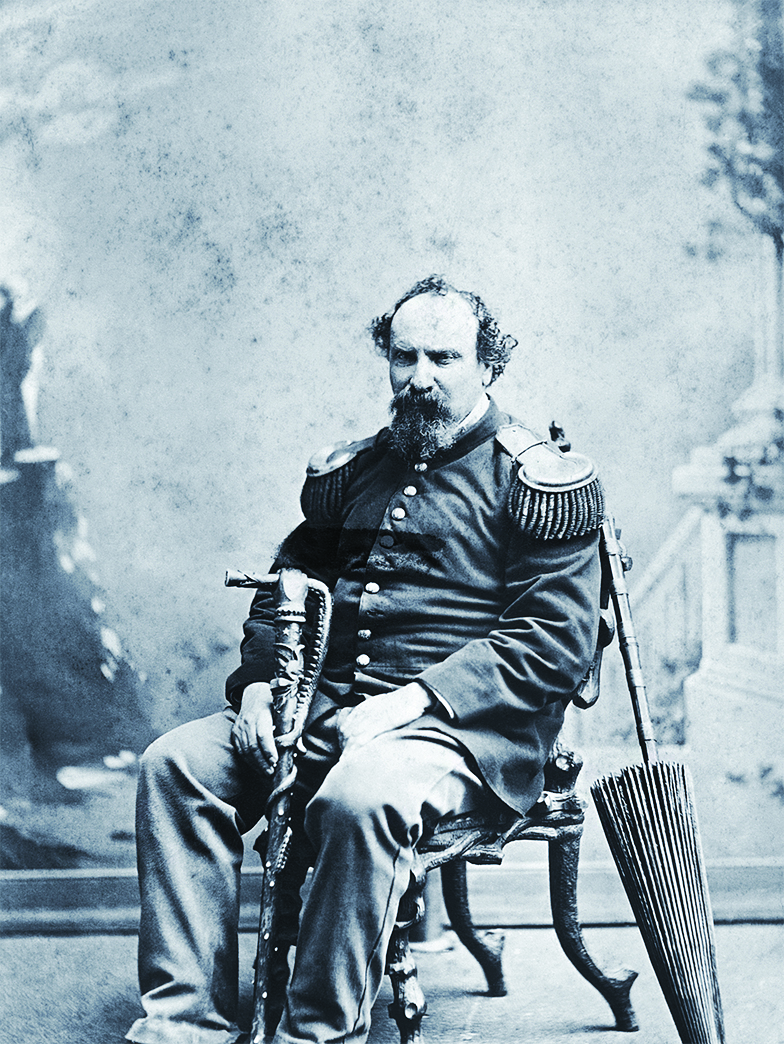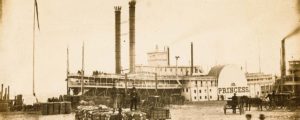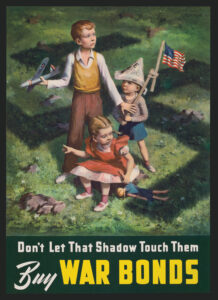He owned San Francisco. With his self-proclaimed royal status as “Norton I, States and Protector of Mexico,” he wore a tall beaver Dei Gratia, Emperor of the United hat with a plume and rosette, dressed in a blue suit with tarnished gold-plate epaulettes and carried both a cane and a tricolor umbrella. His oversized shoes were sensibly ventilated with holes to provide relief for his corns. On ceremonial occasions he would even wear a sword. For more than 20 years, the portly, fierce-eyed ruler patrolled the bustling, free-for-all city with shoulders stooped, hair sprouting from beneath his cap and a “rapt far-away gaze.” But Norton was not born to the purple. The emperor started his San Francisco career as just another rich businessman.
Joshua Abraham Norton arrived in San Francisco from South Africa in 1849 as a successful 30-year-old merchant with a worth of $40,000. Little was known about him except that he had been born in Great Britain, probably London, and was Jewish. However, during the next four years, smart real estate investments increased his fortune to about $250,000.
Then he got greedy. In December 1852, a rice shortage caused the price to escalate from four cents per pound to 37 cents. When a ship loaded with rice came into the harbor, Norton bought the entire shipment for 12 cents per pound, trying to corner the market. He was on the verge of cashing in when at least one more ship sailed in with its hold full of rice. The price plummeted to three cents and Norton was ruined. Sketchy accounts attest that he tried to pay off his debts, but filed for bankruptcy in 1856. Then, after serving as a juror at a trial on September 28, 1857, he abruptly disappeared. No one ever learned where.
For the next two years, San Francisco continued to be, well, San Francisco. Hustlers abounded, and bizarre characters who daily walked the streets giving unsquelched voice to their delusions were tolerated, even encouraged. They were a promenade—George Washington the Second, the Great Unknown, the Guttersnipe, the Money King and a quack peddler called the King of Pain.
Then, on September 17, 1859, Norton reappeared and overshadowed them all. Dressed in an operetta-style uniform, he entered the office of the San Francisco Bulletin, where he demanded publication of a proclamation that “at the request of a large majority of the citizens of these United States,” introduced him as their emperor and demanded their obedience. The town loved it. Mark Twain, with an ever-open eye for endearing instability, called him a “lovable old humbug” and is said to have patterned the King in Huckleberry Finn after him. Robert Louis Stevenson, who traveled through San Francisco, wrote, “In what other city would a harmless madman… have been so fostered and encouraged?”
Norton imperiously gave his “patronage” in return for meals, uniforms, transportation and free drinks (always in moderation). Merchants and bankers would redeem the 50- cent “bonds” he had had printed. He was given a lifetime pass on the Central Pacific Railroad, and a special chair in the Senate chambers in Sacramento, where he would sit and take copious notes.
Journalist Herbert Asbury wrote in 1933: “He ate without paying at whatever restaurant, lunchroom, or saloon took his fancy; after he visited an establishment, the owners were permitted to post a sign: ‘By Appointment to the Emperor, Norton I.’ Invariably, these ‘appointments’ brought great business to the saloon or restaurant so graced.”
The effect his business failure had in creating his addled state is not known, but in 1939 biographer Allen Stanley Lane claimed, “There is no evidence that Norton revealed any striking erratic tendencies during his business career. He probably held in check any irrational whims. But being a proud and sensitive man, he suffered great mental torture over his misfortunes.”
Psychiatrist Robert Solomon of San Diego recently reviewed accounts of Norton and his behavior. Solomon discounts schizophrenia, bipolar disorder and depression-caused psychosis, suggesting that the stress of losing all his assets pushed Norton into a relatively rare condition called a “delusional disorder of the grandiose type,” which resulted in the imaginings that lasted up to the time of his death.
The emperor was a proud man who bore the royal mantle easily. On one occasion, concerned about the fraying of his uniform, he proclaimed: “We, etc., have heard serious complaints from our adherents and all around that our imperial wardrobe is a national disgrace; and even His majesty the King of Pain has had his sympathy excited so far as to offer us a suit of clothing, which we have had a delicacy in [not] accepting. Therefore, we warn those whose duty it is to attend to these affairs that their scalps are in danger if our said word is unheeded.” San Francisco’s Board of Supervisors responded by buying him a new uniform and presenting it to him in a city hall ceremony.
Norton’s name endures mainly because of his frequent proclamations, which still ring with pomp, authority and righteous indignation. He could be harsh in his pronouncements—Norton once threatened Emperor Maximillian of Mexico with execution. On another occasion, in 1860, he abolished Congress; he then ordered U.S. Army General in Chief Winfield Scott to use troops to scatter the politicians if they disobeyed. He also fired President Abraham Lincoln. In 1869 he ordered the assets of the First National Bank of San Francisco seized because it refused to cash his $100 check, and there by jeopardized the financial stability of the realm.
In 1872 Norton endeared himself to San Franciscans forever by decreeing, “Whoever after due and proper warning shall be heard to utter the abominable word ‘Frisco,’ which has no linguistic or other warrant, shall be deemed guilty of a High Misdemeanor, and shall pay into the Imperial Treasury as penalty the sum of twenty-five dollars.”
Perhaps the main reason Norton was cut extra slack by even the more sober-minded citizens was that he was a kindly man who threatened no one. According to one account, he rose to the defense of an unpopular minority: “During one of the typical anti-Chinese demonstrations so common at the time…sensing the dangerously heated tone of [the] meeting, Norton is reported to have stood up before the group, bowed his head and begun reciting the Lord’s Prayer. Within a few minutes the agitators retreated in shame without putting any of their threats into cruel action.” Norton also proved a seer by calling for a suspension bridge between San Francisco and Oakland, a good half century before the Bay Bridge became a reality.
Norton’s preeminence among San Francisco’s bizarre characters was unchallenged until he had to share public attention with a couple of street curs. Bummer and Lazarus were a team of mutts who for a few years in the mid-’60s also worked their way into the hearts of the city and formed an ad hoc scrounging team with Norton. Lane described Bummer as “a small black mongrel with white spots. He had an unusually projecting lower jaw, and teeth too prominent for his lips to cover. The result was a permanent sardonic grin, whether awake or asleep. He had no owner and wanted none. He became the city’s champion rat killer.” Lazarus, Lane said, was smaller and subordinate to Bummer. He was a “thin, mangy, yellowish-black cur.”
The Daily Alta California in 1861 explained that the dogs had teamed up when Bummer rescued Lazarus from a dogfight mauling. “The poor cur had one of his legs half bitten through, and having limped upon the sidewalk, he proceeded to scrape an acquaintance with his deliverer, Bummer, who thenceforth took him under his special protection. Every night since, the two dogs have slept coiled up together, close to some doorway— Bummer always giving the lame cur the inside berth, and trying to keep him as warm as possible.”
The next year the same newspaper added to the dogs’ legend: “Yesterday afternoon, the notorious curs, Bummer and Lazarus, chased a runaway team up Clay Street, one taking one side of the thoroughfare, and one the other. On reaching the corner of Kearny, Bummer rushed in front of the horse and held him at bay until a man came up and caught the team, Lazarus being on hand to check any further advance. These dogs may now be considered in the employ of the city, and of course are exempt from taxation.”
A dogcatcher once seized Lazarus, only to be mobbed by a crowd. Money was raised immediately for the dog’s release, and neither dog was ever arrested again. The Board of Supervisors exempted them from a strict ordinance that banned all dogs downtown without a leash or muzzle, and allowed them to run free, which the dogs had intended to do anyway.
Although neither the dogs nor Norton made ownership claims on the other, the emperor and the canines became linked in the public perception as they made the rounds together seeking out free saloon lunches, and were content patrolling the streets in each others’ company.
Lazarus died of poison in 1863, and Bummer was killed by a drunk in 1865. Norton continued his perambulations alone until his reign ended on January 8, 1880, when he dropped dead of a stroke on a busy street corner.
Not until then, celebrated though he had been, did officials first enter his home. It was a 50-cent-per-night room at the Eureka Lodging House, and it was where he had lived for 17 years. The room was about 10 feet by 6 feet. There they found a scissors-legged, folding camp cot, one straight-back chair, and a pitcher and basin. Strewn about were proclamations, telegrams and pictures of other reigning monarchs, especially of his hoped-for consort, Queen Victoria. Found in his possession were $5.50 and mining stock certificates worthlessly proclaiming face value exceeding $1 million. It was spectacularly downscale for a man who carried the weight of two nations on his shoulders.
Norton’s San Francisco “subjects” collected enough money to dignify their emperor with new clothes and a rosewood casket. His funeral cortege was two miles long, and crowd estimates ranged as high as 30,000. Although he was buried in San Francisco by the Masons, Norton’s wanderings were not over. In 1902 the city decided it had too much space dedicated to cemeteries, and during the next four decades, thousands of bodies were moved a few miles south to the tiny village of Colma. In 1934 Norton’s body was moved to Woodlawn Cemetery there, where it was topped by a handsome tombstone engraved with his full title as he believed it to be. He rests in Colma with Wyatt Earp, Joe DiMaggio, William Randolph Hearst and Lincoln Steffens. He might— just might—have approved.
If it had been Norton’s misfortune to sink into mental illness in about any other American city in the mid-19th century, he probably would have been locked up. And if Norton wandered the streets of San Francisco today, he would be lost in the crowd of thousands of homeless who have taken refuge in that tolerant city, many of them far crazier than the emperor, and none of them nearly as humorous.
Norton did not see himself a victim, and the society he lived in didn’t either. If his delusions represented his mind groping to recapture the public esteem he had known before his bankruptcy, then he succeeded by grace of the forbearance and sense of humor of San Francisco. The city foreshadowed its present self, and showed that even in the Victorian era it was possible to hang loose.
The emperor has been adopted by the Gay and Lesbian Coalition of San Francisco, which holds an Emperor Norton celebration each March. A biker club and E Clampus Vitus, the partying history buffs, also show up annually to celebrate his colorful life. His name has been used to label beer, snack chips, a sundae (featuring two bananas and a topping of nuts), an Italian restaurant, an inn and an independent record label. Most appropriate, perhaps, is his continued connection with the San Francisco–Oakland Bay Bridge. The eastern span, damaged in the 1989 Loma Prieta earthquake, is being replaced with a new structure scheduled for completion in 2012. Some have suggested that the new bridge be named after Emperor Norton I.
Originally published in the October 2006 issue of American History. To subscribe, click here.





